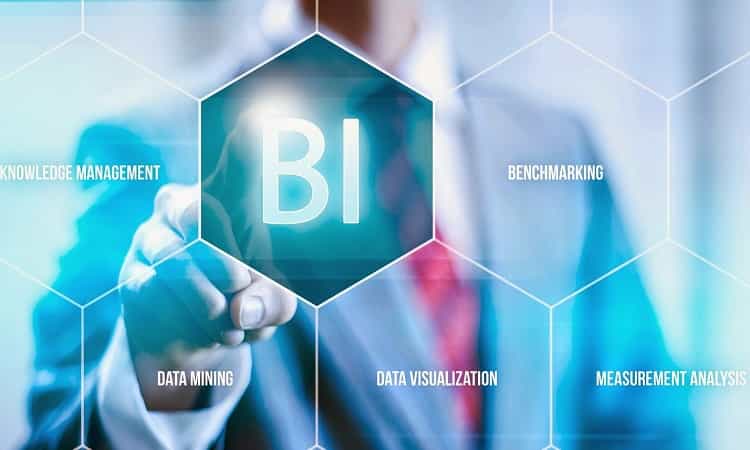 TechBarrista recently caught up with Carl Jones, Vice President and Head of Travel of SAP Concur for Asia Pacific and Greater China, on how travel analytics can be turned into business intelligence. Here’s a summary of our questions and Carl’s response:
TechBarrista recently caught up with Carl Jones, Vice President and Head of Travel of SAP Concur for Asia Pacific and Greater China, on how travel analytics can be turned into business intelligence. Here’s a summary of our questions and Carl’s response:
Q: Can you introduce yourself and what you do?
A: I am Carl Jones, Vice President and Head of Travel of SAP Concur for Asia Pacific and Greater China. My role in SAP Concur is to look at optimising our clients’ spend, particularly in corporate travel and expense management; looking at process efficiency, minimising costs, and driving revenue. SAP Concur has clients of all sizes in various verticals, such as mining, finance, supply chain, and logistics. It is important that we help all our clients drive savings.
Q: Can you explain what is meant by travel and expense (T&E), and how SAP Concur can help organisations manage T&E?
A: Travel is generally everything pre-booked and pre-trip; expense is the expense process in terms of making sure that employees are reimbursed for that travel. SAP Concur is the world’s largest supplier of T&E systems and platforms, with over 40,000 customers. This gives us some insights into travel patterns which are unique in the marketplace, and we’re heavily invested in new technologies and the future.
Some of the emerging trends that SAP Concur sees across businesses revolves around how digital technology is transforming the way businesses can manage their processes, and also offer new ways to try to get best practices put in. a lot has changed dramatically over the past couple of years with the ability to migrate processes and systems into the cloud. SAP Concur has a huge infrastructure that’s cloud-based, and that provides advantages for organisations both large and small to put data into the cloud, and for us to manipulate and examine that data very quickly.
Q: What sort of digital technologies do you mean, and what effect would they have?
A: One example is the predictive elements – the ‘what if’ scenarios. So what if I made this change to my travel policy; what effect would it have downstream, would it affect costs significantly? What happens if I remove this hotel chain from my preferred hotels, what would that mean? Another example is robotics and machine learning. We use machine learning in particular to look at patterns and trends and processes to see if there is any way to optimise those processes when looking at the programme holistically. This allows a lot of these processes to become automated, seamless, and by definition, quicker.
Seeing how all of these technologies come through and interact with the whole of the business chain is exciting.
Q: So how can these technologies be deployed practically within T&E management in Asia?
A: For me, there are 3 key areas that travel analytics can contribute towards ROI; namely, some measure of control over how that spend is captured, spend optimisation and how to really make sure that organisations do as much as they can to keep the spend they invest within limits, and fraud analytics and emerging technologies, which are really helping to capture fraud very early on in the process.
Firstly, the key to control is to ensure that you as an organisation have the ability to limit or reduce or control where your employees are spending on business travel. Generally, in Asia Pacific this is done through an approvals process, which is controlled by the travel policy. Over the past few years, I think this process has become a lot more automated; the technology exists now to ensure that it’s a very accurate approval, it’s a specific business request, and it can be tied closely to expense claims. Because this is automated, managers can start to look at – and anticipate changes in – budgets in real-time.
It is also key to ensure that employees have access to technologies, such as an online booking tool, that enable them to choose the right trips within policy. You then need to make sure that all that data is captured early on, and then brought into the system so that it can be tracked easily with minimal human interaction. By doing so, you can see which employees are not adhering to policy – and it could be because in specific instances, the policy may need to be amended.
Secondly, pulling together the data that is required and manipulating that data to optimise your spend. One key thing to optimise spend is ensuring the right data coming in. It has to be accurate. It also has to be complete, with the correct datasets, and that can be a challenge in the T&E category. We also need to ensure that the data flows through in a timely manner so that people can accurately work through that data while it remains relevant, e.g. while doing airline negotiations.
It is important that the data is available in a format that is easy to use. Traditionally, we have a lot of manual intervention because of all the different datasets available; hotels, corporate cards, airlines, manual expense reports, the Concur expense format – all of these different types of systems all need to be manually brought together. The Holy Grail for me is to be able to put some parameters into your dashboards, and then being able to play around with it; ideally graphically on a touchscreen. Having strategies to minimise your corporate travel spend really is reliant on these datasets being accurate, complete, and timely; and a system that allows you to make ‘what if’ scenarios with really in-depth algorithms in the background.
Thirdly, travel analytics helps with fraud and compliance. A global study conducted by the Association for Certified Fraud Examiners in 2016 brought out several interesting highlights. Fraud costs companies somewhere around 5% of total revenue. Fraud doesn’t have to be malicious and can be accidental or mistaken, or mismanagement of processes as well; expense fraud accounts for 1 in 6 cases of organisational fraud, and it could be as simple as putting through the wrong numbers.
Instead of using complex manual processes to check, double-check, and triple-check, travel analytics can be used instead. SAP Concur has launched a new product called Detect in partnership with – and powered by – a company called AppZen. Detect integrates artificial intelligence to expose fraud and errors. The idea is for each expense item received, it will not only check that the same item is not claimed twice, it will also check that the vendor is not on the list of non-preferred vendors, and that any foreign language is translated.


